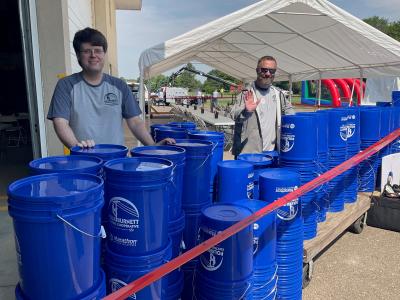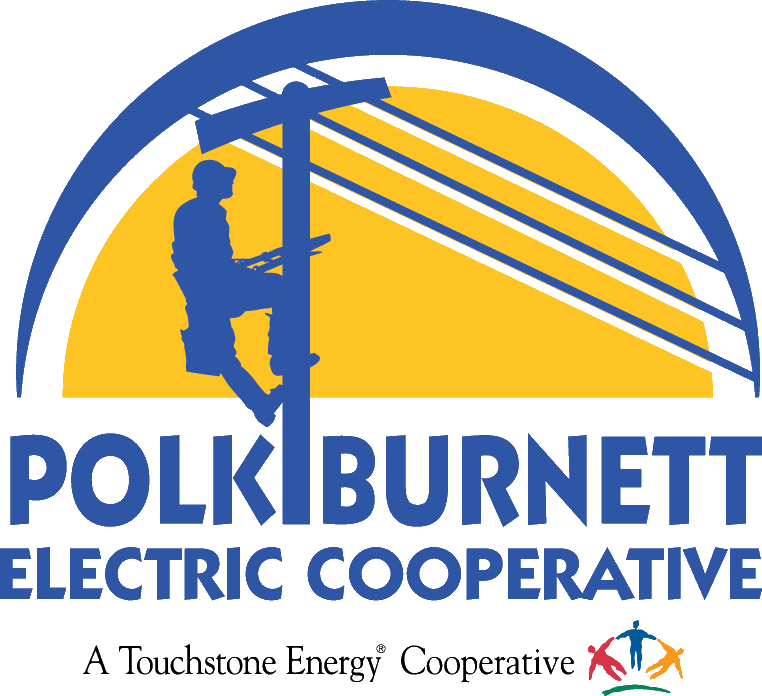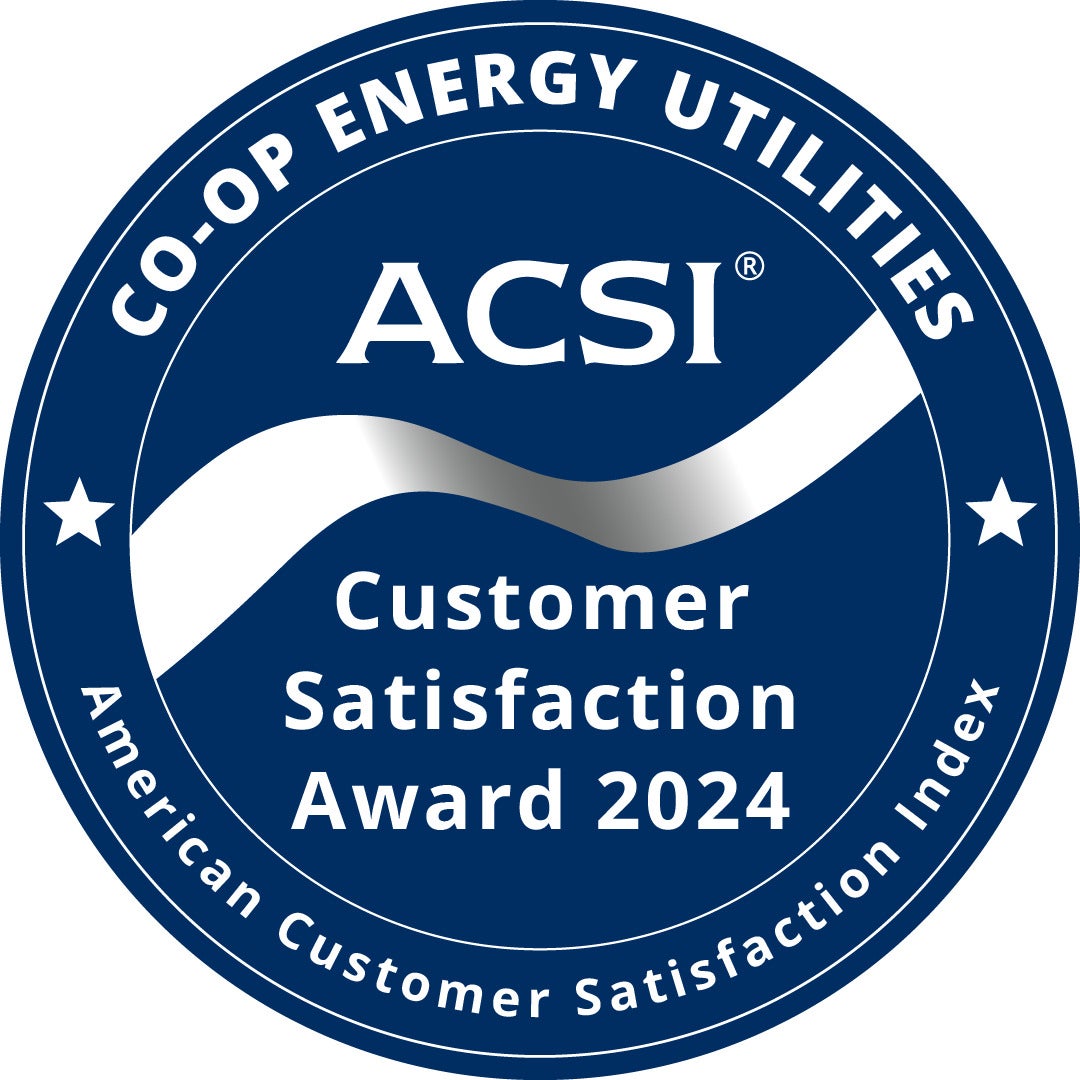Thank you for attending 87th Annual Meeting and Member Appreciation Day
by General Manager Steve Stroshane
 Employees and directors of Polk-Burnett Electric Cooperative welcomed 700 members and guests to our Centuria office Friday, June 6, for Member Appreciation Day and the 87th Annual Meeting of the cooperative.
Employees and directors of Polk-Burnett Electric Cooperative welcomed 700 members and guests to our Centuria office Friday, June 6, for Member Appreciation Day and the 87th Annual Meeting of the cooperative.
We thank all who attended. We enjoy meeting our members and talking with you about co-op performance, especially reliability and our member and community focus.
87th Annual Meeting
Following the member appreciation lunch, Board President Ed Gullickson called the Annual Meeting to order with a salute to Veterans and board introductions. The one-hour meeting included reports on co-op financials, reliability, member satisfaction, community involvement and 2025 board election results. The meeting concluded with a member Q&A forum.
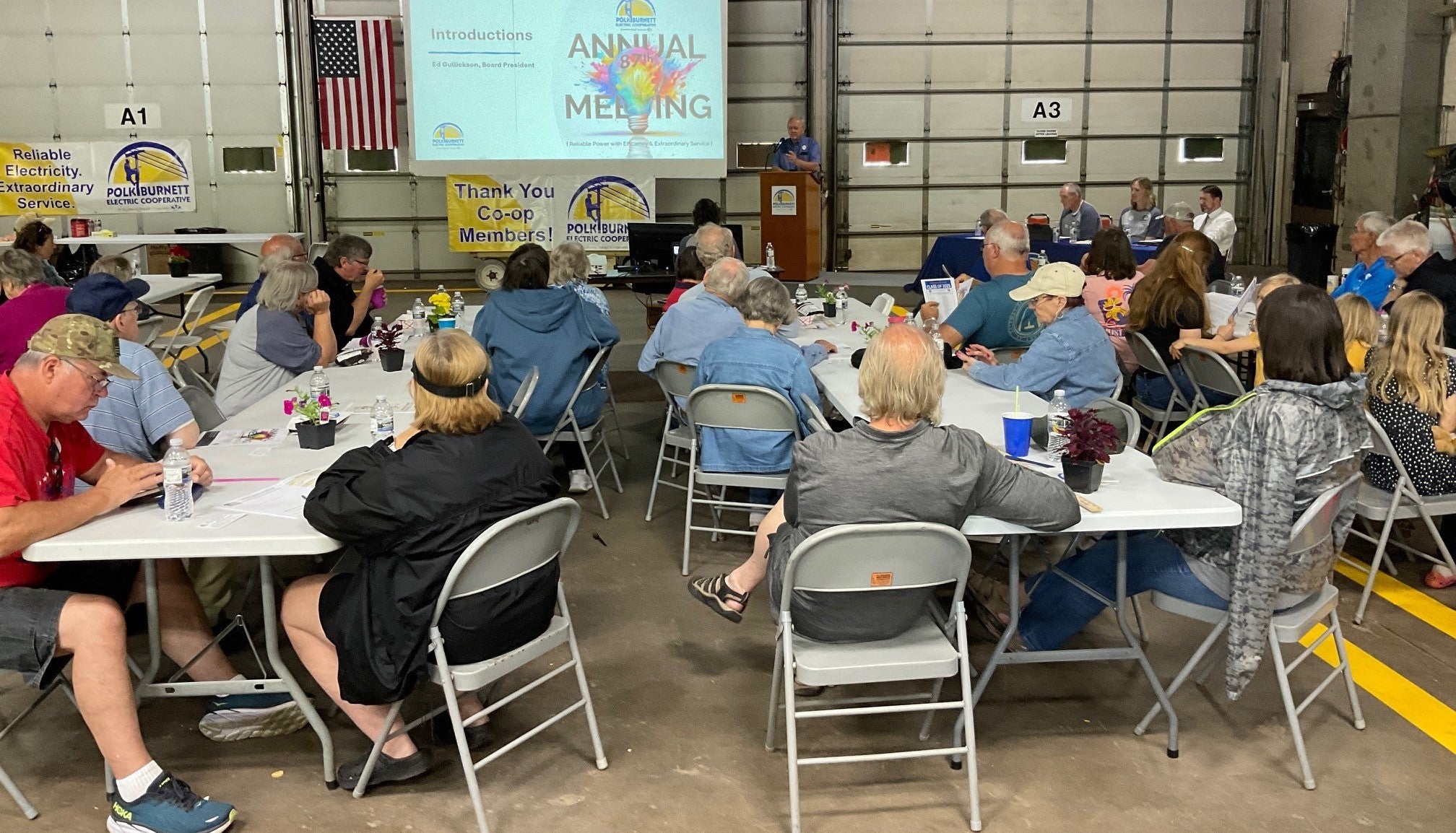
Strategic investments to keep the lights on
Polk-Burnett Electric Cooperative employs 50 local people who provide you with extraordinary service. We deliver power to more than 22,000 electric accounts. Lineworkers maintain 3,500 miles of power line; 2,000 miles are underground cable and 1,500 miles are overhead wire.
In 2024, co-op members experienced an average of 50 minutes without power, when major events are factored out. When storms and major events are included, members experienced an average of an hour-and-a-half without power. 42% of outage hours were caused by trees on power lines. That's why our work to keep the right-of-way clear is important; it improves safety and reduces outages.
When I started at Polk-Burnett in 1996, members averaged four hours without power! Our investment in the electric grid is strategically planned to keep your lights on.
The co-op invested $5.9 million in 2024 and another $6.1 in 2025 to upgrade the electric system and reduce the number and length of outages. New technology enables the co-op to re-route power from one substation to another and restore power more quickly. We are using this switching technology in Webster and it’s coming to Balsam Lake, St. Croix Falls and Hertel areas in 2026.
The new Cedar Lake Substation is a $2 million investment to meet the growing need for energy in Somerset and Star Prairie areas. It’s the first new substation to serve Polk-Burnett members since 2001. Construction has started and it’s expected to be operational later this year.
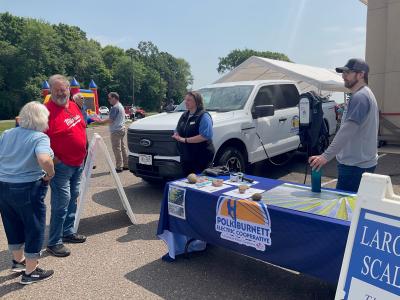 We are proud of the level of satisfaction we provide
We are proud of the level of satisfaction we provide
Polk-Burnett members gave the co-op a score of 87 out of 100 on the 2024 American Customer Satisfaction Index. For comparison, investor-owned utilities earned an ACSI score of 74 and municipals a 75.
In response to member feedback, if your lights go out, we keep you informed through outage text alerts, updates on Facebook, as well as a live outage map on our website. New this year, we are providing texts and emails to notify members when service technicians are on the way and when electric devices are controlled through the co-op’s load management program.
Financial report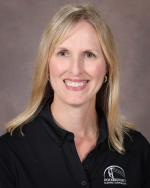 Heather Gerber, finance and accounting manager, reported that the co-op had $112 million in electric assets in 2024, with electric operating revenue of $36 million and electric operating margins of $2 million. The co-op installed 273 new services and sold 237 million kWhs of electricity in 2024.
Heather Gerber, finance and accounting manager, reported that the co-op had $112 million in electric assets in 2024, with electric operating revenue of $36 million and electric operating margins of $2 million. The co-op installed 273 new services and sold 237 million kWhs of electricity in 2024.
“Polk-Burnett does not own power plants; 56% of our revenue (more than $20 million) goes to purchase power from Dairyland Power Cooperative,” explained Gerber. “The balance is what we have to work with to build and maintain local power lines and keep your lights on.”
Gerber said that inflation has increased the cost of materials, especially trucks, transformers and wire, as well as contracted services. She reported that the price for utility construction materials has risen 51% since 2020. Because of this, the cooperative will implement a 3% electric rate increase in July; large commercial members will see an average increase of 4.7%.
Gerber provided a refresher about co-op rates, noting the difference between the kWh energy charge and the daily availability charge, which covers the cost of wires, poles, transformers and other materials to build and maintain the electric grid and ensure power is available at member locations. Gerber explained that the daily availability charge is higher in rural areas because there are fewer members to share these costs. Polk-Burnett has an average of just six members per mile of line.
Gerber reminded members about co-op programs to help with electric bills, including SmartHub to track energy use, EnergySense rebates, prepay and budget billing. “Your electric bill is affected by the rate, but also by the energy you use. Please give us a call if we can help you find ways to save energy and money,” she said.
In 2024, Polk-Burnett provided more than $200,000 in rebates to help co-op members improve energy efficiency. The upgrades saved 435,000 kWh of electricity.
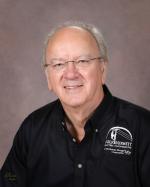 Gullickson added that Polk-Burnett returned $1.65 million in Capital Credits to members in fall 2024. “One of the greatest advantages of co-op membership is Capital Credits,” he said. “As a co-op, any money we collect above and beyond expenses is returned to members.”
Gullickson added that Polk-Burnett returned $1.65 million in Capital Credits to members in fall 2024. “One of the greatest advantages of co-op membership is Capital Credits,” he said. “As a co-op, any money we collect above and beyond expenses is returned to members.”
Improving our local quality of life
In 2024, Polk-Burnett’s Operation Round Up donated $70,694 to 70 local nonprofits, thanks to the generosity of members who round up their electric bill.
The board approved $151,500 in scholarships to 101 children of co-op members in the Class of 2025, our largest class ever! Scholarships are funded with unclaimed Capital Credits that otherwise would be forfeited to the state, and by the generosity of members who donate Capital Credits.
Local solar to benefit local members
Co-op leaders also shared an update on local solar projects, including SunTuria Solar in Centuria (2017). Georgetown Solar (2023), and two new projects in 2025 near Luck Substation and Hertel Substation. Generating some of our own power locally improves reliability, offsets power costs and helps meet high summer demand. These projects were coordinated with others across Wisconsin to get a better price and return on investment for our members. All are small 10- to 13-acre footprints, with restored native habitat.
See financials, handouts, prize winners and more from the 87th Annual Meeting.
